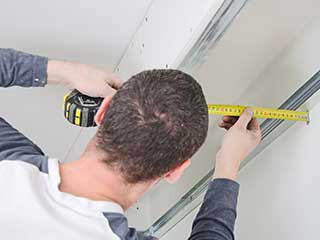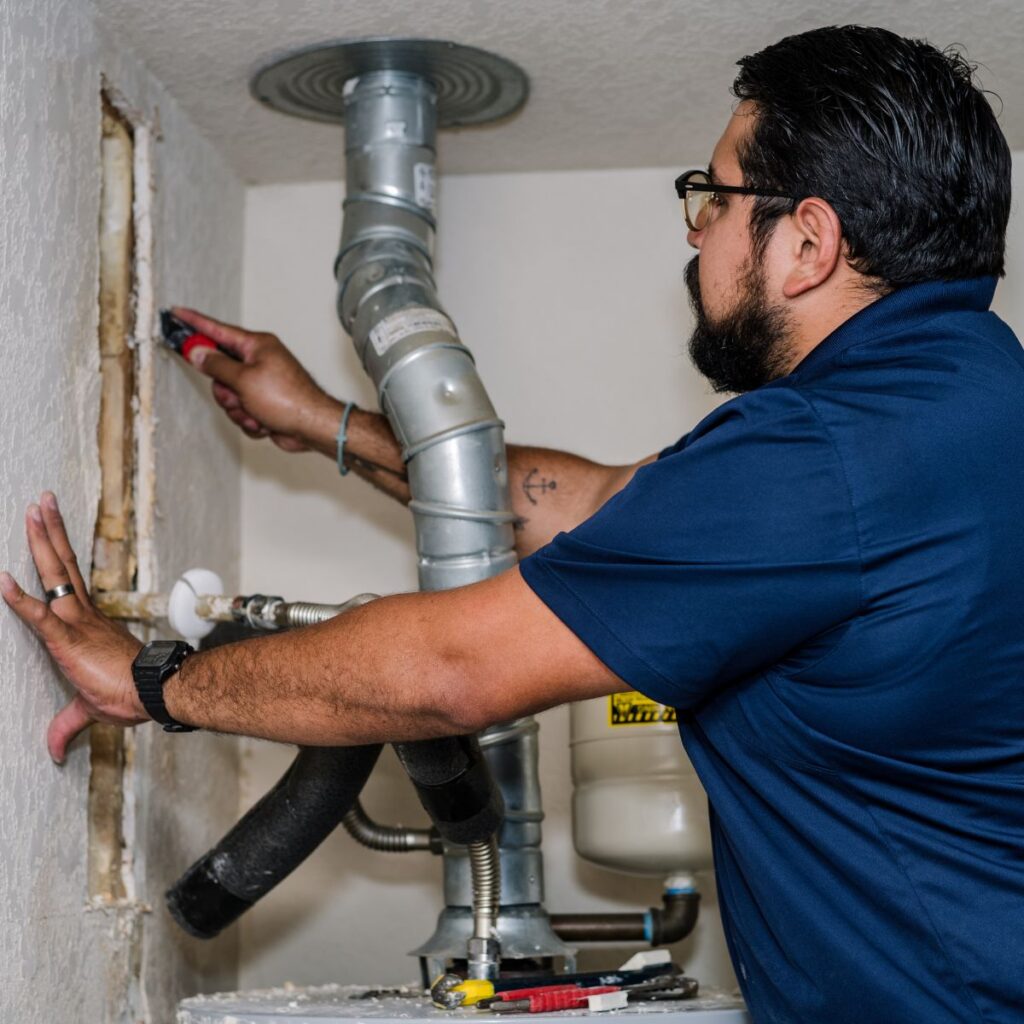Drywall contractors provide craftsmanship that enhances every Interior Painting project.
Crucial Tips for Effective Drywall Repair Service and Setup Methods
Efficient drywall repair and installment needs a cautious technique. Understanding the types of drywall and having the right tools is vital. Accurate dimensions and appropriate techniques can greatly impact the result. Many forget essential actions like taping and fining sand, which can make or break the last appearance. As projects proceed, common challenges might develop that call for focus. Discovering these ideas can bring about a much more effective and refined finish.
Recognizing Different Sorts Of Drywall
Understanding the various sorts of drywall is important for any kind of effective repair service or installation project. Drywall, commonly referred to as plaster board, can be found in a number of ranges tailored for specific applications. Criterion drywall is the most commonly used type, ideal for general indoor walls and ceilings. Moisture-resistant drywall, commonly environment-friendly in shade, is designed for areas susceptible to moisture, such as washrooms and kitchen areas. Fireproof drywall, typically colored pink or purple, is engineered to stand up to higher temperatures and is commonly made use of in garages or near heaters. Furthermore, soundproof drywall aids lower sound transmission, making it ideal for multi-family homes or recording workshops. Specialty drywall, like concrete board, is used in damp locations like showers or bathtub surrounds. Comprehending these types assists in choosing the ideal material for each job, making sure longevity and efficiency in repair services or new installments.
Necessary Devices for Drywall Fixing and Installment
Having the right devices is vital for effective drywall fixing and installation. A top quality energy blade is essential for reducing drywall sheets precisely. A drywall T-square helps assure straight edges, while a taping blade is required for applying joint compound smoothly over joints. Additionally, a drywall saw permits eliminating harmed areas or fitting drywall around components.
For hanging drywall, a power drill with drywall screws is crucial, as it allows quick and protected installment. A degree is also essential to verify that the drywall is straight and appropriately lined up. A sanding block or post sander is important for smoothing out joint substance once it has dried out. Finally, a gauging tape is critical for exact measurements, stopping waste and making sure a proper fit. Equipped with these devices, individuals can tackle drywall jobs effectively, bring about professional-looking results.
Step-by-Step Guide to Fixing Holes and Cracks
When dealing with openings and cracks in drywall, having the right devices and materials is necessary for an effective repair service. This overview outlines the needed items and supplies a clear, detailed procedure to successfully bring back the surface area. Recognizing these aspects will aid ensure a seamless surface and resilient results.
Tools and Products Needed
A fully equipped toolkit is vital for reliable drywall repair work and installation. Key devices include an energy knife for reducing drywall, a tape action to assure accurate sizing, and a drywall saw for bigger holes. A putty blade is necessary for applying joint compound efficiently, while a sanding block or post sander helps attain a seamless surface. For patching, a roll of fiberglass harmonize tape or paper tape is essential to strengthen joints. Furthermore, a drill and screws are needed for protecting new drywall pieces. Essential products contain joint compound, guide, and paint to complete the fixing. Having these devices and products available guarantees a smoother, much more effective repair work procedure, yielding professional-looking outcomes.
Repair Process Steps
Fixing openings and fractures in drywall requires an organized strategy to guarantee a smooth finish. The area surrounding the damage should be cleaned extensively to eliminate dirt and particles. Next off, for small fractures, a putty knife is used to apply a joint substance uniformly over the area. For larger holes, a patch is required; the harmed area is removed, and a new piece of drywall is suited area, protected with screws. When the patch remains in position, joint compound is put on blend the sides. After drying, sanding the location smooth is vital. Lastly, the fixed surface area must be keyed and repainted to match the surrounding wall, ensuring an inconspicuous fixing.
Techniques for Installing Drywall Panels
Setting up drywall panels needs careful preparation and exact execution to guarantee a expert and smooth coating. It is necessary to determine the wall space precisely and cut the panels to fit, ensuring that they line up with the studs. Placing the panels horizontally is generally advised, as this can improve the architectural integrity and minimize the number of joints.
Utilizing drywall screws, installers need to safeguard the panels every 16 inches along the studs, ensuring a firm hold. It is crucial to avoid overdriving the screws, which can damage the paper surface area. For edges and corners, utilizing an energy knife permits tidy cuts and a snug fit.

Ending Up Touches: Insulation, Mudding, and Fining sand
As soon as the drywall panels are firmly in place, the following crucial action entails the finishing touches of taping, mudding, and sanding. Taping is necessary for creating a seamless change in between panels and concealing joints. A high quality drywall tape, either paper or fiberglass mesh, ought to be used over the seams, guaranteeing it sticks correctly to the mud that will be applied following.
Mudding, or applying joint substance, complies with the taping procedure. This compound fills gaps and ravel the surface area. An initial layer needs to be applied generously, feathering the edges to blend with the drywall. After the initial coat dries, subsequent layers might be required for a flawless coating.
Finally, sanding is necessary to accomplish a smooth surface area. A fine-grit sandpaper must be utilized to delicately ravel any type of flaws. Care needs to be taken to stay clear of over-sanding, which can damage the drywall - Drywall Installation Ogden Utah. Effectively performed, these ending up touches develop a specialist look all set for painting
Tips for Preserving Your Drywall After Setup
Keeping drywall after installment is crucial to protecting its look and architectural integrity. Normal cleansing is required; dirt and dirt can accumulate, so gentle cleaning with a damp cloth is suggested. Homeowners must likewise inspect for any type of indications of moisture or mold, particularly in high-humidity areas like kitchens and washrooms. If any damages takes place, it is necessary to resolve it without delay to avoid more concerns.
Making use of furnishings pads can aid stop scratches or damages from hefty products. Additionally, repainting the drywall with a high-quality, cleanable paint gives an extra layer of protection and makes future cleaning less complicated. Avoid making use of unpleasant cleaners or devices, as these can harm the surface. Finally, preserving a steady interior environment with appropriate humidity degrees will assist stop breaking or contorting over time. By adhering to these suggestions, one can ensure that drywall remains in excellent problem for years ahead.
Often Asked Inquiries
The Length Of Time Does Drywall Require To Totally Dry After Installation?

Can I Install Drywall Over Existing Drywall?
Yes, drywall can be mounted over click here existing drywall, yet it is necessary to ensure the underlying surface is protected and sufficiently prepared. This approach can enhance insulation and decrease installation time, though it may include weight.
What Is the most effective Means to Soundproof Drywall?
The very best means to soundproof drywall includes using specialized soundproofing materials, such as durable networks, acoustic caulk, and sound-dampening drywall. These techniques efficiently reduce audio transmission in between areas, boosting total acoustic performance in living areas.
How Do I Select the Right Drywall Density?
To select the appropriate drywall thickness, take into consideration the application and place. Criterion household wall surfaces generally use 1/2 inch, while ceilings or specialized areas may call for 5/8 inch for extra stamina and soundproofing capacities.
Exist Eco-Friendly Drywall Options Available?
Yes, eco-friendly drywall choices are available. These consist of items made from recycled products, gypsum boards with reduced volatile organic compounds (VOCs), and those using lasting production procedures, supplying environmentally-conscious selections for building and construction and restoration projects.
Having the right devices is important for reliable drywall fixing and installment. For hanging drywall, a power drill with drywall screws is essential, as it enables quick and secure setup. Key devices consist of an energy blade for cutting drywall, a tape step to guarantee precise sizing, and a drywall saw for bigger holes. Yes, drywall can be mounted over existing drywall, but it is important to assure the underlying surface area is secure and adequately prepared. The ideal method to soundproof drywall includes utilizing specialized soundproofing products, such as resilient networks, acoustic caulk, and sound-dampening drywall.